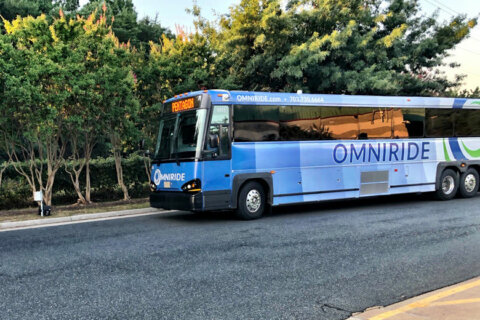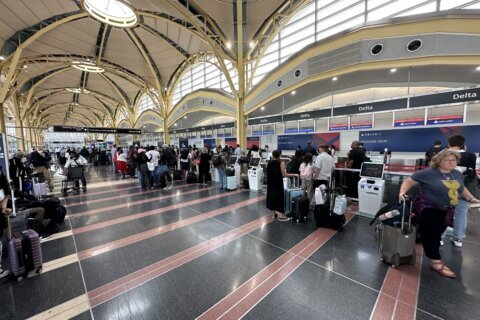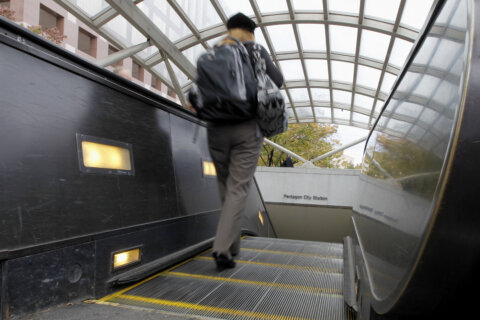WASHINGTON — Construction of the second phase of the Silver Line is now two-thirds done, with more than half of the budget spent.
The six new stations between Reston Town Center and Ashburn are expected to open in 2020.
Workers have spent more than 5 million hours on the $2.78 billion project so far, according to updates expected to be presented Wednesday to the Metropolitan Washington Airports Authority Board.
An airports authority contractor is building the extension, which will be turned over to Metro once completed.
A separate airports authority budget preview also scheduled to be presented Wednesday states that Dulles Toll Road rates are expected to remain flat as promised in 2018, at $3.50 for a full trip. The rate is expected to go up to about $4.75 in 2019, in what would be the first increase since 2014.
Construction work update
Station roofs, escalators and pedestrian bridges are being installed now, and electricians are connecting power cables in other areas. Rails are being installed along much of the corridor and in the new rail yard, and the last large storm drains are scheduled to go in along nearby roads over the next few months.
At the Dulles Airport Station, moving walkways are being installed in a pedestrian tunnel that will take travelers below a parking lot to reach the airport terminal.
Capital Rail Constructors, the contractor responsible for most of the project, said their total work — design and construction — is 67 percent complete. Construction alone is 61 percent complete.
The first phase of the Silver Line opened in July 2014.
The $1.4 billion spent on the second phase, through the end of August, includes $186 million in contingency funds. Another $364 million in contingency funds remain for changes or unexpected costs. Right now, 107 identified changes are being negotiated and reviewed.
Most of the workers on the project live in Virginia (58 percent of time worked), while about a quarter live in Maryland and a small fraction live in the District (3 percent). Thirteen percent of the labor has been done by people who live elsewhere.







